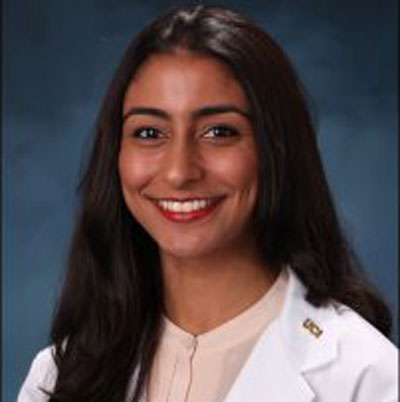
Graduate Student
Office: 1400 Biological Sciences III
Email: gattass@uci.edu
Google Scholar
Sandra Gattas
Lab Research Projects
I contribute to the following research areas in the Translational Neuroscience Laboratory.
Individual Research Projects
I have two key projects.
In the first project, I investigate how two areas in the brain which are viewed as two memory systems, the hippocampus and the neocortex, work together for the encoding and retrieval of similar memories. I am doing this using human electrophysiology (recording electrical activity directly from the human brain). This process of discriminating between similar memories is referred to as pattern separation and is thought to take place each time a memory is formed, such that memories are stored and retrieved as distinct experiences.
The second project takes a more general form – rather than investigating computations in the brain for similar memories (i.e., similar inputs), I aim to characterize the computations in the hippocampus to any input. In other words, identify the ‘transfer function’ of the hippocampus through which we would know how any input is transferred to its corresponding output. The long term goal is that in doing this for each brain area, we can link together these transfer functions and understand the input-output relationships of the brain as a whole.
Published
- Gattas, S., Elias, G. A., Yassa, M. A., & Fortin, N. (2020). CA1 20-40 Hz oscillatory dynamics reflect trial- specific information processing supporting nonspatial sequence memory. BioRxiv, 1–31. https://doi.org/10.1101/2020.03.10.985093. [in revision in elife]
- Karimi Abadchi, J., Nazari-Ahangarkolaee, M., Gattas, S., Bermudez-Contreras, E., Luczak, A., McNaughton, B. L., & Mohajerani, M. H. (2020). Spatiotemporal patterns of neocortical activity around hippocampal sharp- wave ripples. ELife, 9. https://doi.org/10.7554/elife.51972
- Kakusa, B., Saluja, S., Dadey, D., Barbosa, D., Gattas, S., Miller, K. J., … Halpern, C. H. (2020). Electrophysiology and Structural Connectivity of the Posterior Hypothalamic Region: Much to Learn from a Rare Indication of Deep Brain Stimulation. Frontiers in Human Neuroscience. https://www.frontiersin.org/articles/10.3389/fnhum.2020.00164/full
- Daitch, A. L., Foster, B. L., Schrouff, J., Rangarajan, V., Kaşikçi, I., Gattas, S., & Parvizi, J. (2016). Mapping human temporal and parietal neuronal population activity and functional coupling during mathematical cognition. Proceedings of the National Academy of Sciences of the United States of America, 113(46). https://doi.org/10.1073/pnas.1608434113
Accepted
- Chan, A. Y., Lien, B., V., Choi, E. H., Chan, A. K., Hanna, G., Lopez, A., Brown, N., Gattas, S., Kirillova, L., Horton, D., Fote, G., Hanst, B., Perry, R., Lee, Y., Golshani, K., Hsu, F. P., & Oh, M. Y. Back Pain Outcomes After Minimally Invasive Anterior Lumbar Interbody Fusion: a Systematic Review. Journal of Neurosurgery.
Submitted
- Gattas. S, Larson, M. S., Mnatsakanyan, L., Sen-Gupta, I., Vadera, S., Swindlehurst, L., Rapp, P., Lin, J. J., and Yassa, M. A. Theta-mediated human hippocampal-neocortical interactions underlie pattern separation.
Gattas. S, Collett, H. A., Huff, E. A., Creighton, S. D., Weber, S.E., Buckhalter, S., Manning, S. A., B. D. Winters and B. L. McNaughton. The obstacle course: a novel enrichment paradigm for rodents. - Huang, Y., Kakusa, B., Feng, A., Gattas, S., Shivacharan, R., Lee, E., Parker, J. J., Kuijper F. M., Barbosa, D. A, Keller, C. J, Bohon, C., Abanoub, M., and Halpern, C. H. (2020). Anticipatory Food-Specific Processing in the Human Insular Cortex Under Experimental and Naturalistic Conditions.
Talks
- “Neocortical-hippocampal interactions supporting pattern separation in humans.” Park City Winter Conference. 2020, Park City, Utah.
- “Pattern separation in the context of the complementary learning systems theory and the hippocampal memory indexing theory.” Medical Scientist Training Program, annual retreat. 2019, Lake Arrowhead, California.
- “Electrophysiological signatures of pattern separation in humans.” 32nd Annual Scientific Conference of the Center for the Neurobiology of Learning and Memory, Irvine, California, 2019 (Presentation, Awarded for best Data blitz presentation)
- “Sequence Memory Processing in CA1.” Medical Scientist Training Program, annual retreat. 2018, Lake Arrowhead, California.
Poster presentations
- Sandra Gattas, Myra Larson, Jack J. Lin, and Michael A. Yassa. Pattern separation beyond the hippocampus: neocortico-hippocampal mechanisms of pattern separation in humans. Chicago, Illinois, Society for Neuroscience, 2019.
- Sandra Gattas, Jack J. Lin, and Michael A. Yassa. Investigation of neural mechanisms of pattern separation in humans. Epicenter symposium, University of California, Irvine, 2019.
- Sandra Gattas, David Euston, and Bruce McNaughton. The effect of learning on cortico-hippocampal interactions. UCI MSTP retreat, 2016.
- Jennifer Meylor, Sandra Gattas, Josef Parvizi. Exploring how epilepsy affects visual learning ability in the human brain. Indian Science and Engineering Society National Conference, Minneapolis, 2016.
Jennifer Yih, Sandra Gattas, Xiaofang Yang, and Josef Parvizi. Probing the neuroanatomy of olfactory processing in the human orbitofrontal cortex with electrical brain stimulation. Washington, D.C., Society for Neuroscience, 2015. - Vinitha Rangarajan, Brett L. Foster, Sandra Gattas, Josef Parvizi. “Temporal Dissociation of Sub-Category Level Face Processing.” Washington, D.C., Society for Neuroscience, 2014.
- T32 NIH training award, 2019-2020
- Jared M. Roberts Memorial Award, 2020
- Best Data Blitz presentation award, 32nd Annual Scientific Conference of the Center for the Neurobiology of Learning and Memory, Irvine, California, 2019
- Honor standing (top 10% in course) in Neuroscience, UCI School of Medicine, 2016
- Honor standing (top 10% in course) in Biomedical ethics, UCI School of Medicine, 2016
- 1st Place Prize, PLEXUS Journal of Arts and Humanities, Performing Arts Competition, UCI School of Medicine, 2016
- Publication of interpretive dance performance, ‘When It’s Time’ in the PLEXUS Journal of Arts and Humanities, 2016 edition, UCI School of Medicine
What the lab means to me…
“For me, the Yassa Lab is a place that fosters academic excellence and community. We have diverse research interests but enjoy learning together and providing each other support. This lab has provided me with opportunities to craft and execute my own ideas and the support to pursue my PhD in Electrical Engineering.”













